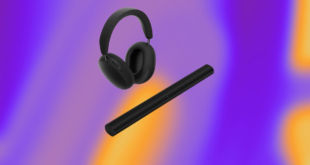Anxiety robs many of us of our best sleep potential. When stress creeps in, trying to find the right thing to make you feel more at ease can be overwhelming, if not completely impossible. Despite working in health and wellness for years, I still found myself needing professional help to manage my stress.
If you’ve dealt with anxiety, you know how much havoc it can wreak on your sleep. I have no trouble falling asleep, personally; staying asleep is my issue. I often wake up at ungodly hours to racing thoughts about everything I have to get done, everything I’d failed to get done the day before. I’d done all the “right” things to manage anxiety, like reducing my coffee intake, intentional breathing, meditation and eating balanced meals. Although I saw small improvements, the results weren’t long-lasting. That’s when I spoke to Andrea Micheo, a certified holistic health coach from the Institute for Integrative Nutrition, to find natural remedies for anxiety.
In the first in-person consultation, we walked along the beach at sunset. I gave her the rundown of what my day looked like, and she gave me a couple of actionable tips to start regulating my cortisol levels (also known as the stress hormone). My first assignment was to get sunlight first thing in the morning.
Read more: Best Mattress
How morning sunlight impacts your circadian rhythm
A good night’s sleep is essential for our health. One often overlooked factor in achieving quality sleep is exposure to sunlight in the morning. There are multiple benefits of getting sunlight first thing in the morning, such as boosting your mood and improving your quality of sleep. But how? Great question, let’s get into it.
We can’t talk about morning sunlight and improved sleep hygiene without first addressing our circadian rhythm. This is the body’s 24-hour sleep-wake cycle. It naturally responds to light and darkness, and it dictates when we get hungry, when we get sleepy and when it’s time to wake up. Think of it as an internal clock.
According to Johns Hopkins, the SCN (or suprachiasmatic nucleus) is the area of your brain that controls your sleep-wake cycle. In the morning, your eyes sense the sunlight, and then the SCN triggers the release of cortisol to help your body wake up. Getting sunlight in the morning helps regulate your circadian rhythm as the light signals to your body and brain that it’s time to start the day. When it gets dark at night, the SCN triggers the release of melatonin, which makes you sleepy.
“About a year ago, I started getting sunlight first thing in the morning and at sunset as a means to regulate my circadian rhythm. Since then, I’ve ditched the melatonin and have been getting more quality sleep,” said Micheo.
Our internal clock is most sensitive to light during three specific times of the day:
- During the first hour after waking up: In the morning, as you get exposed to sunlight, your body starts to suppress its melatonin production (sleepy hormone).
- Approximately 2 hours before your bedtime: As it starts to get dark outside, your brain receives the signal that it’s time to start winding down and it’s time for bed.
- During the night: The darkness continues to signal to the brain to keep us asleep.
You can leverage these three stages of light to synchronize your circadian rhythm. Studies show that exposure to daylight not only improves sleep quality but can also help you fall asleep earlier. “I always recommend this time-efficient and cost-effective behavioral tool to all my clients and continue getting positive results and feedback,” added Micheo.
Read more: Circadian Rhythm: Here’s How to Reset and Get Better Sleep
Data insight into my sleep quality before and after getting morning sunlight
I’m a decent sleeper: I prioritize my sleep and usually get enough quality sleep to wake up feeling refreshed the next day. When looking at the data from my Oura ring (a cool fitness tracker), my average sleep score is around 80 (which Oura labels as “good”). Here’s my sleep data from the night before I incorporated getting sunlight in my morning routine.
As you can see, I got almost 8 hours of sleep, but I had more wakeups than usual (restfulness), it took me 28 minutes to get to sleep (10 to 20 minutes is normal for most adults) and I didn’t spend an ideal amount of time in deep sleep.
The only thing I switched up in my morning routine was going for a 30-minute walk outside briefly after waking up. I didn’t wear sunglasses or a hat to expose my eyes to the sun’s first morning rays, but I did protect my skin with sunscreen. If you go outside later in the day, it’s best to wear a hat, sunglasses and use sunscreen.
Read more: Best Sunscreen
I didn’t change anything else in my daily or night routine, and this is what I woke up to:
The first thing I noticed was that I slept a whole hour more and that I experienced fewer wakeups during the night. I also spent more time in deep sleep, and it only took me 9 minutes to fall asleep.
Did I feel any different? Besides feeling a little more energized, I didn’t experience a huge shift. But I am surprised that I noticed such a difference in my sleep quality in just one day of exposing myself to the morning sun. The initial results are pretty promising, and I plan to get sunlight most mornings to see if I see significant improvement in the long run.
Guide to sunlight therapy in the morning
While there isn’t a single right way to get sunlight in the morning, these general guidelines can help you maximize your time in the sun:
- Go outside within the first hour of waking up: Since your body is most sensitive to light right around when you wake up, it’s a good idea to soak up some sunshine first thing in the morning.
- Aim to spend at least 30 mins in the sun: According to Harvard Medical School, 30 minutes is the optimal time to spend in light.
- Be sure to wear sunscreen: While the sun’s UV radiation is less harmful in the morning than during the day, it’s still a good idea to protect yourself with sunscreen.
- Talk to your doctor: Before trying out light therapy with the morning sun, be sure you talk to your healthcare provider to ensure it’s safe for you.
Tips to get more sunlight in the morning
Now that we’ve gone over how morning sunlight can affect your sleep quality, let’s dive into ways to get more sunlight.
- Rise with the sun: Waking up around sunrise can be a game-changer for your sleep. Aim to wake up early and catch the first rays of sun to help regulate your circadian rhythm.
- Open your curtains and blinds: One easy way of maximizing natural light in your home is to open your blinds and curtains. This allows the sunlight to provide a natural wake-up signal for your body.
- Do outdoor activities in the morning: Whether it’s going for a brisk walk or just stretching on your patio, exposure to natural light and physical activity can help you wake up naturally.
- Eat breakfast by a window: If your time is limited in the morning and you just can’t find 15 extra minutes to get sunlight, try having your breakfast or coffee near a window.
- Invest in a light therapy lamp: If you have limited access to natural sunlight or live in a region with overcast weather, consider a light therapy device that mimics the spectrum of natural light.
 meganwoolsey Home
meganwoolsey Home



